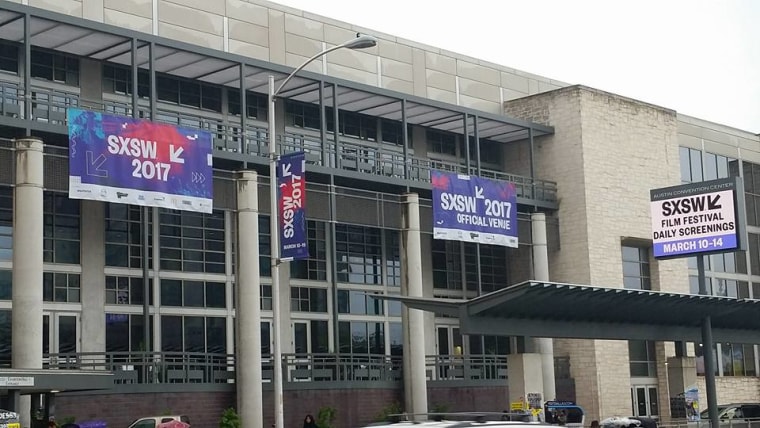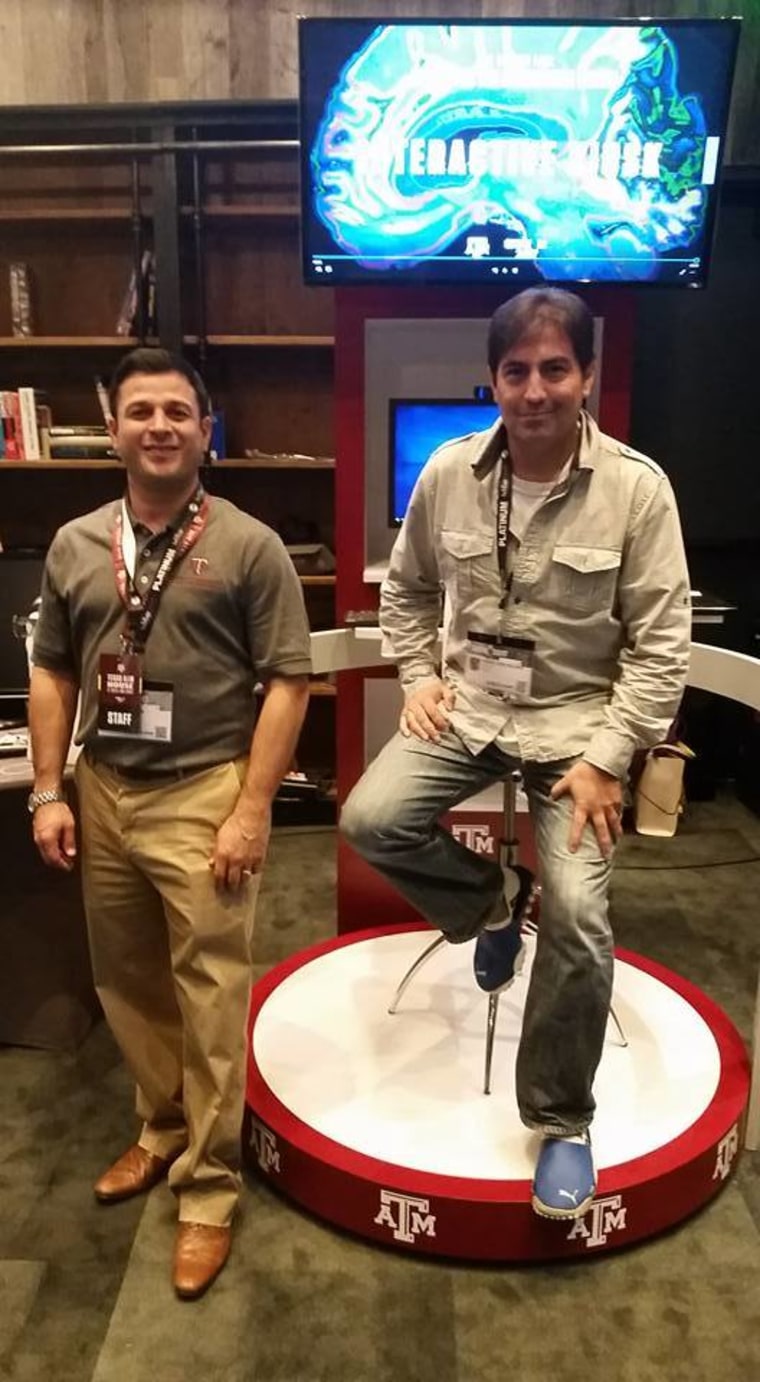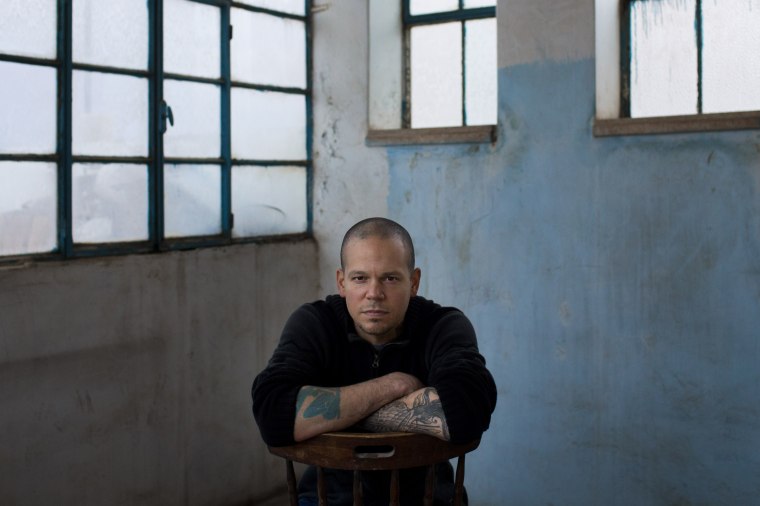AUSTIN, Texas -- In his novel "Love in the Time of Cholera," the eminent Colombian author Gabriel García Márquez describes a world where human emotions thrive despite an epidemic of anger.
Playing off a pun on the Spanish word for anger (“cólera”), which means both ire and cholera, Márquez gave us a hint about the creative role of the artist in turbulent times.
In 2017, we live in a period infused with the anger of nativist, nationalist sentiment, from the building of walls to Brexit. There is one way to counter this bile, and that is to let the forces of hybridity, globalization, multiculturalism, diversity, and creativity flourish against the desire for uniformity and homogeneity. There are few examples as emblematic of this resistance as the SXSW conference and festival that has been taking place here and wraps up Sunday,

SXSW 2017 is a mélange of ideas for those who are willing to think outside the box. It is difficult to classify this event, for it is more than just a festival for music, film, or technology. By meshing all these fields together, it forces the participant to realize that new, rich ideas emerge when concepts cross multiple boundaries.
From my vantage point as a participant, SXSW 2017 does not seem explicitly planned to counter the push for autarky that is sweeping many countries, but the inherent creative chaos of the event inadvertently militates against isolationism. This year, there were over 340,000 participants from over 90 countries. Among them, a large and growing number of Latinx and Latin American creators, artists, and innovators crossed the border into Texas, that reddest of states.
RELATED: SXSW Festival 2017: Tech That Includes, Innovates and Uplifts
Austin is a beehive of cross-cultural interactions during SXSW. One of the most compelling presentations so far was by the Brazilian actors Wagner Moura of "Narcos" and Alice Braga, of "Queen of the South." At their panel last Sunday, Moura, who rose to prominence in gritty films such as Elite Squad, asked us to consider the possibility that racism is still too powerful in Hollywood.
The stereotypical Latin drug-dealer roles notwithstanding, Braga recognized that “Brazilians are Latin,” and that they should become more integrated into South America even through a basic path such as learning Spanish as a second language, as Moura suggested. Braga, who plays a strong female character in a genre usually dominated by machismo, told us that Latinx actors must be accepted as actors full stop, without qualifiers.
Perhaps the strongest argument against fixed categories and pigeon-hole identities was made by the Puerto Rican hip-hop artist Residente, of the Grammy record-holding group Calle 13. Residente’s newest project is a documentary (http://schedule.sxsw.com/2017/films/68851) that shows how, after taking a DNA ancestry test to see his genomic and ethnic roots, he traveled to the areas all over the world that have— quite literally— made him who he is, such as Mongolia, Russia, China, Ghana, Barcelona, and Puerto Rico. He made music based on these multiple ethnic influences, showing us that there is no such thing as “racial purity;” we are all mixed through and through.

In other areas of culture, Latinx are also present, sometimes without much reference to their own personal ethnic background, as Braga urged earlier. For instance, in his conversation with Bob Odenkirk, former SNL alum Fred Armisen, who is of part-Venezuelan origin, simply did what he does best: make audiences laugh. In Sports, the Salvadoran Fernando Palomo of ESPN Deportes, arguably the best-known Latin American sports newscaster due to his coverage of international fútbol, made a fascinating 360-degree video about his daily work at ESPN.
Other sports-related panels such as that of Major League Soccer commissioner Don Garber highlighted the growth of Hispanic markets for professional soccer as well as MLS’s commitment to diversity, noting the emotional unfurling of a rainbow-colored tifo (large banner) at the opening of the Orlando City Soccer Club’s new stadium in the aftermath of a difficult year for the city’s LGBQT community following the mass shooting at PULSE nightclub.
An important yet relatively new component of SXSW is its incorporation of educational, research, and university linkages. This year, Texas A&M University took over the Van Zandt Hotel across the Austin Convention Center to showcase its “Human Behavior Lab” project.
Led by Marco Palma, a native of Honduras, and Luis Ribera, who hails from Bolivia, with support from graduate students Michelle Segovia from Ecuador and Bachir Kassas from Lebanon, the Human Behavior Lab was developed to “understand why and how what people intend to say or do can be very different from what they actually say or do,” in the words of Palma.
RELATED: Plenty of Innovation, But Also Plenty of Politics
The Lab’s technology measures human biometrics in order to better understand how people reason, make decisions, and how their own bodies affect rationality. The lab can quickly and accurately collect biometric data, including eye tracking, facial expression analysis (reading emotions), neural signals (electroencephalography), galvanic skin response (GSR), and heart and respiration rates. The result is a better understanding of how context and emotions influence human behavior. (Full disclosure, the author also was a participant in staging the lab.)
Researchers affiliated with the University of Texas were also present, such as Juan Sequeda, a Colombian computer scientist who has developed a database on all of the world’s constitutions, to help us understand the spread of human rights. Latino startups like Parallel18 were also represented. Sociology professor Ben Carrington also organized a panel on Islamic women in sports, “Beyond the Burkini Ban."
Tighter immigration controls under President Donald Trump have prevented some participants from getting to SXSW. The Italian band “Soviet Soviet” was denied entry to SXSW as were other artists. However, the profoundly international and multicultural nature of the festival can be seen in the sheer numbers. Last year, they came from 82 countries. From Latin America, Brazil is the biggest participant, with over 600 members, followed by Mexico (300), and Argentina (100). Avant-garde bands such as FRAAEK, from Guatemala, and Troker, from Mexico, are also here.
RELATED: SXSW: Is Diversity in Tech Leaving American Minorities Behind?
From outside Latin America, Japan has a huge presence, with over 800 participants as well as the “Japan Factory” cultural hub. Other Asian presence includes the Korean “K-Pop” Party planned for Friday at the Belmont Club. Many sessions highlight the creative role of women. These included Amani Al-Khatahtbeh, who underscored the value of Islamic participants in a period when their religion is widely vilified.
As the conference closes, it is heartening to see that a film about the precarity of the lives of Latina immigrants, "Most Beautiful Island," has won the Feature Film Grand Jury Award. Angelina Dellara, Partner and Creative Planning Director at AMEN, an independent ad agency in Buenos Aires told me, “SXSW gave me, as a Latina, networking opportunities with no geographical barriers."

I asked Calle 13’s Residente what we should do in the times of Trump. His answer surprised me. He said we should try to ignore him. He thinks Trump is not the cause but merely a symptom of our current society’s trends towards isolation and homogeneity.
As artists, writers, students, and citizens, he stated, we should focus on the laws and institutions that allowed someone like him to get elected and which perpetuate racialized systems of power. He closed by calling for more integration amongst Latin Americans and Latinx in general.
Given the location of this conference in the Southwest, in a state that is a bridge to Latin America, perhaps organizers should consider adding to the already-existing grants to include more lower-income students and artists from the Americas. At a time when Trump’s budget calls for the elimination of the National Endowment for the Humanities and the National Endowment for the Arts, the role of events such as SXSW becomes more salient in the shaping of our national — and even global — identities.
